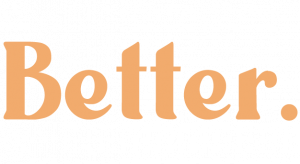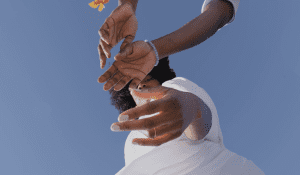Unlike traditional psychotherapy, Cognitive Behavior Therapy for trichotillomania is fast and focused on action to minimize the signs of the condition in people who are seeking treatment. Trichotillomania is a disorder in which people feel compelled to pull out their hair. This can be a very destructive behavior, leading to bald patches, thinning hair, and even skin infections.
This hair-pulling behavior can have a severe impact on the person with the condition, as well as their friends and family. It’s important to note that in most cases, behaviors are not performed in response to stress, but actually cause more anxiety in the short term after pulling has occurred.
While there is no one-size-fits-all treatment for trichotillomania, CBT has been shown to be an effective approach.
Cognitive Behavioral Therapy
Cognitive Behavioral Therapy (CBT) is a form of psychotherapy that focuses on managing distressing emotions and changing patterns in behavior. It’s based on the idea that our thoughts affect how we feel and behave, and changing maladaptive thought patterns or behaviors can alleviate distress.
An important aspect of Cognitive-Behavioral Therapy with trichotillomania is identifying the thoughts and feelings associated with pulling. Once these are made clear, CBT can help to identify better ways of coping with the hair-pulling disorder.
CBT therapists, unlike typical talk-therapists, focus on addressing current symptoms rather than focusing on early childhood development. This takes place through assessment and problem-solving in session, and more importantly, through the use of homework assignments designed to reduce symptoms outside of session. Hundreds of research studies have consistently shown CBT interventions to be most effective for treating a variety of psychological problems, including trichotillomania.
Cognitive-behavioral therapy for trichotillomania begins with an assessment of the factors involved implicated in hair-pulling.
Hair Pulling Behavior or Hair Pulling Disorder
A key part of CBT for trichotillomania is differentiating between hair pulling behavior and hair pulling disorder. Hair pulling behavior is a more general term that includes all instances of hair pulling, regardless of whether or not it meets the clinical criteria for trichotillomania.
Hair-pulling disorder, on the other hand, is more specific and refers to hair-pulling that meets the clinical criteria outlined in the Diagnostic and Statistical Manual of Mental Disorders (DSM-V).
CBT Treatment Sessions
This process of CBT typically starts with a quick conversation with your therapist. The DSM-V criteria for diagnosing trichotillomania include recurrent hair pulling over at least a one-month period, which results in hair loss.
CBT sessions are usually kept shorter than traditional psychotherapy, lasting around 45 minutes, to keep people focused and on track. For instance, what times of the day hair pulling occurs, what emotions are present, whether people are around, etc. Some of this information is gathered during the first CBT session, and the remaining data comes from the patient’s own self-monitoring and tracking via CBT self-monitoring forms. Interestingly, there is evidence that the mere act of completing self-monitoring forms can significantly reduce hair pulling.
Following assessment, the therapist and patient collaborate to identify the more important factors involved in hair pulling, and using this to create a habit-reversal training (HRT) plan. HRT consists of mindfulness training and competing response training. Mindfulness involves training people to be more conscious of when they are pulling, and be more vigilant in situations in which they are more prone to pulling. Competing response training is strategizing to develop alternate behaviors and habits that do not allow for pulling to take place.
Newer treatments for trichotillomania incorporate the addition of elements of what is known as acceptance and commitment therapy (ACT), which utilizes acceptance of urges and sensations as a way of coping with them. For trichotillomania, this involves learning to accept urges to pull or uncomfortable emotional triggers to pulling, rather than trying to control these internal experiences. Paradoxically, acceptance of unpleasant experiences leads to less distress, and usually the duration of the experiences is dramatically curtailed.
Trichotillomania treatment generally lasts 10 – 12 sessions. However, if there are underlying psychological problems associated with the hair pulling, such as depression or clinical anxiety, more sessions may be needed to effectively treat the hair pulling and the underlying psychological problem.
CBT Therapist
Finding the right CBT therapist is important. Therapists who have experience and training in cognitive-behavioral therapies, including CBT for treating trichotillomania, are likely to be the best fit for helping you overcome hair pulling behaviors. When looking for a therapist, it is important to ask about their experience with this type of therapy.
Hair pulling episodes
Hair pulling episodes be very distressing, and it is important to seek professional help if you are struggling with this problem. Cognitive-behavioral therapy can be an effective treatment for treating trichotillomania, and with the help of a therapist who is experienced in this type of therapy, you can learn to overcome hair pulling behaviors.
Hair pulling sign of big problems within the body and mind
Trichotillomania, or compulsive hair pulling, is a psychological disorder that can cause intense feelings of shame and embarrassment in those who struggle with it. It involves an obsession with pulling one’s own hair out, to the point where this behavior interferes with daily life.
Habit Reversal Therapy (HRT)
One of the popular techniques of behavior therapy is the Habit Reversal Therapy (HRT), which has been found to be effective in treating trichotillomania. The basic premise of HRT is that hair pulling can be considered a conditioned, learned response. Thus, the way to treat it successfully is by deconditioning this behavior and replacing it with more appropriate behaviors.
This habit reversal training focuses on four main steps:
- Identifying the Triggers of pulling (trichotillomania)
- Recording hair pulling data
- Replacing hair-pulling with a competing response (a more appropriate behavior that is incompatible with the act of pulling)
- Assertive commitment to stopping hair pulling
The body-focused repetitive behaviors (BFRBs), including trichotillomania, are not well understood. Skin picking is one of the most common body-focused repetitive behaviors (BFRBs), and perhaps has the biggest overlap with OCD. Skin picking is usually considered its own disorder, but there is some evidence that suggests it may also be a subtype of OCD. The Diagnostic and Statistical Manual of Mental Disorders (DSM-5) includes BFRBs in a new category, “Obsessive-Compulsive and Related Disorders.”
Obsessive-Compulsive Disorder (OCD)
Trichotillomania is sometimes classified as an OCD, even though it does not always involve intrusive thoughts or images. Despite this, the cognitive-behavioral treatments that are effective for OCD may also be helpful for trichotillomania.
Self-injurious behavior (SIB)
Hair pulling may be associated with what is called self-injurious behavior (SIB), or deliberate infliction of harm to one’s own body for purposes of emotional regulation. SIB can take many forms, including cutting, burning, and hair-pulling. It is important to seek professional help if you are engaging in SIB, as this behavior can be very dangerous and lead to long-term physical and psychological problems.
Helping children who pull hair and does nail biting
Even children and adolescents demonstrate hair pulling and nail-biting. Parents often worry about this, as they feel their child is too young to be experiencing these urges and behaviors and may ask what the behaviors mean about their child’s emotional health or development. Hair pulling and nail-biting can look like a sign of another problem such as anxiety or a depressive disorder, but rarely are they a sign of something more serious.
Parents also worry about the long-term implications for children who pull hair and do nail-biting. These behaviors can lead to social withdrawal and avoidance, as well as low self-esteem due to the teasing that often results from this type of behavior.
Certain therapy sessions or medical treatment can be helpful for children who pull hair, such as Habit Reversal Therapy (HRT). Parents can help with this by participating in these sessions and encouraging the daily practice of new behaviors. Parents may also want to enroll children in after-school activities that promote positive socialization with others and help them develop a sense of accomplishment.
Trichotillomania in children may be treated with both behavior therapy and habit reversal training.
Trichotillomania Learning Center – Hair pulling & Nail-biting Program
The Trichotillomania Learning Center (TLC) began in 1989 to meet the needs of people with trichotillomania, compulsive hair pulling and related problems. TLC is the only organization in the world whose primary mission is focused on education, support, and research for these disorders.
Increased awareness of this disorder at a primary healthcare level should be encouraged. Self-help programs like monitoring the urge to pull hair, and rewarding oneself for resisting the urge, might be of some help.
The Learning Center attempts to maintain a comprehensive listing of support groups. Health care providers and those who have trichotillomania can request their addition to the list. A comparative study has shown that CBT with HRT is more effective than supportive therapy and that combining pharmacotherapy with CBT doesn’t seem to have any additional benefits.
This psychiatric illness affects approximately 2% to 5% of the population. It is equally prevalent in men and women. The mean age of onset is between 10 and 13 years but there are reports of the disorder starting in the childhood age too.
Dermatological conditions like acne vulgaris, alopecia areata and eczema can mimic a diagnosis of TTM. It is always advisable that the diagnosis is made by a dermatologist.
***
Can CBT help with trichotillomania?
In CBT for trichotillomania, a patient will learn to change problematic behaviors and thoughts. In the case of trichotillomania, this involves learning how to cope with urges or “triggers” that cause hair pulling. The goal of CBT is not to get rid of these triggers but rather to help the person learn how to manage them in a healthier way.
What is cognitive therapy for trichotillomania?
Cognitive behavior therapy ( CBT ) is a type of psychotherapy that helps patients understand and change their thoughts, feelings, and behaviors. The goal of cognitive-behavioral for Trichotillomania (treatment aimed at changing hair pulling) is to learn how to control urges to pull out hair, resist the urge when it occurs, and replace the hair-pulling behavior with more appropriate behavior.
What therapy is best for trichotillomania?
A study comparing the effectiveness of the medication, cognitive behavior therapy ( CBT ), and a combination of effective treatments that included both medication and CBT found that medication was more effective at eliminating hair pulling than either CBT or the combination treatment for up to five months.
How do I get rid of trichotillomania permanently?
There is not an answer for the disease however it is easily controlled. Therapy using a trained body focussed repetitive behavior practitioner should be the best method in the treatment of trichotillomania.



